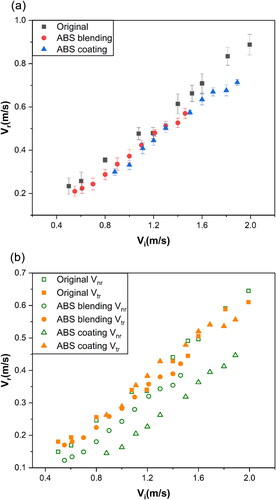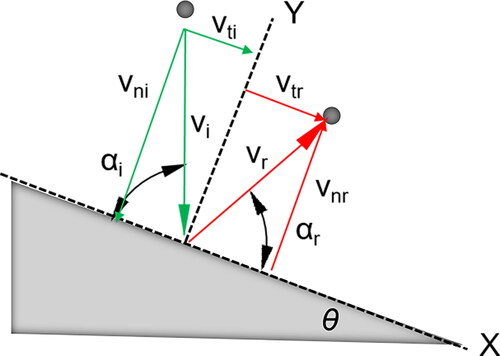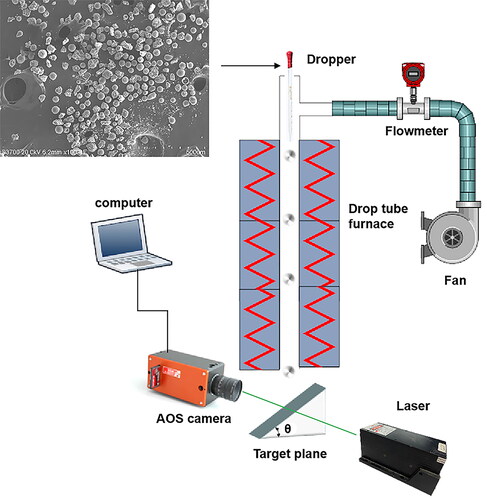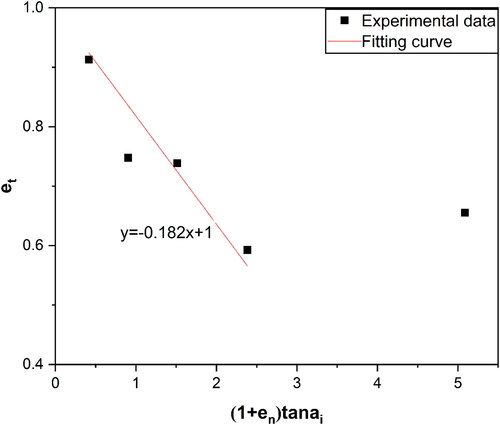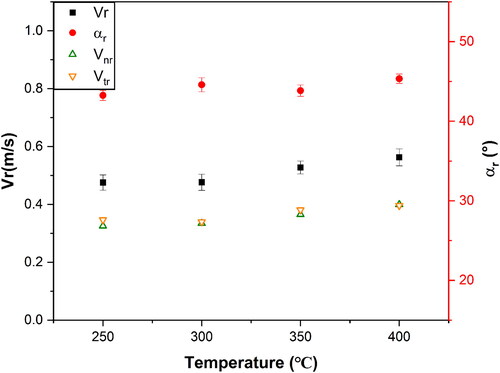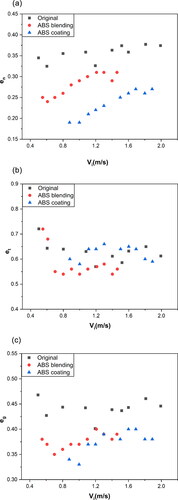Figures & data
Table 1. Ash compositions.
Table 2. Experimental parameter.
Figure 3. The dependence of the rebound velocity and angle on the impact velocity. T = 300 °C, αi = 60°.
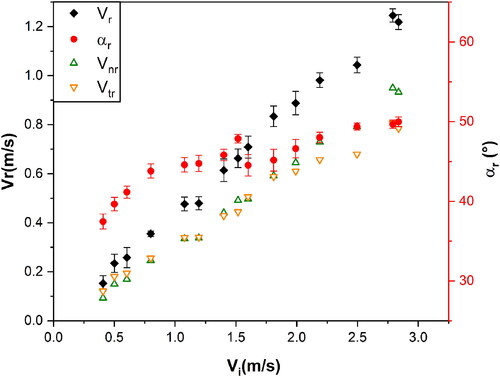
Figure 4. The dependence of the coefficient of restitution on the impact velocity. T = 300 °C, αi = 60°.
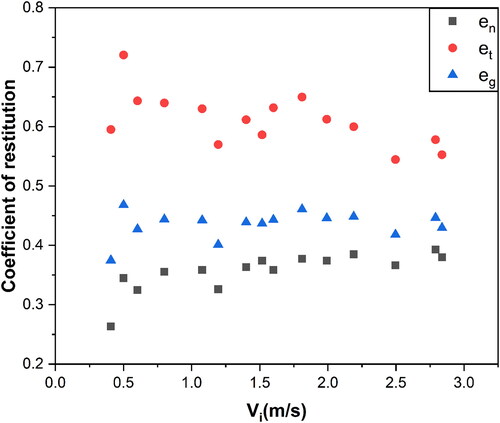
Figure 5. The dependence of the rebound velocity and angle on the impact angle. T = 300 °C, Vi = 1.5 m/s.
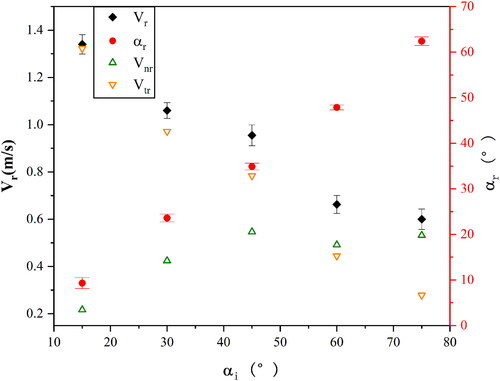
Figure 6. The dependence of the coefficient of restitution on the impact angle. T = 300 °C, Vi = 1.5 m/s.
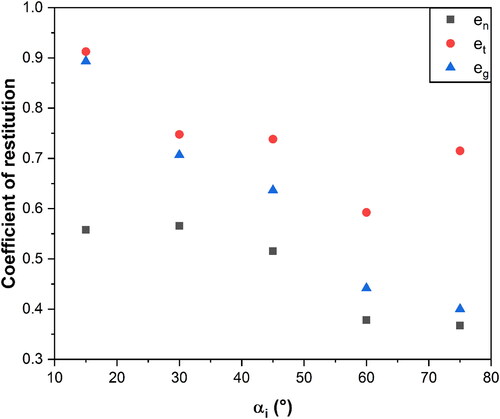
Table 3. The temperature at different vertical distances from the impact plane.
Figure 9. The dependence of the coefficient of restitution on the experimental temperature. αi = 60°, Vi = 1.0 m/s.
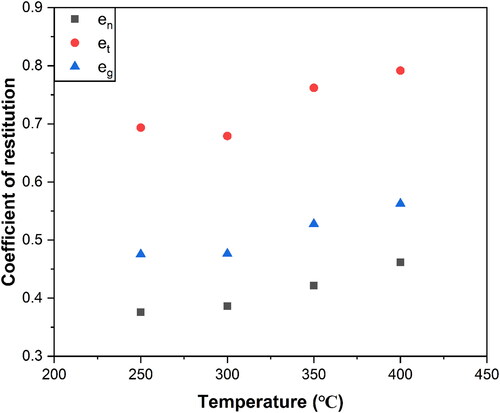
Figure 10. The dependence of the rebound velocity on the impact velocity. Original (condition 1), ABS coating (condition 4), ABS blending (condition 5), T = 300 °C, αi = 60°.
